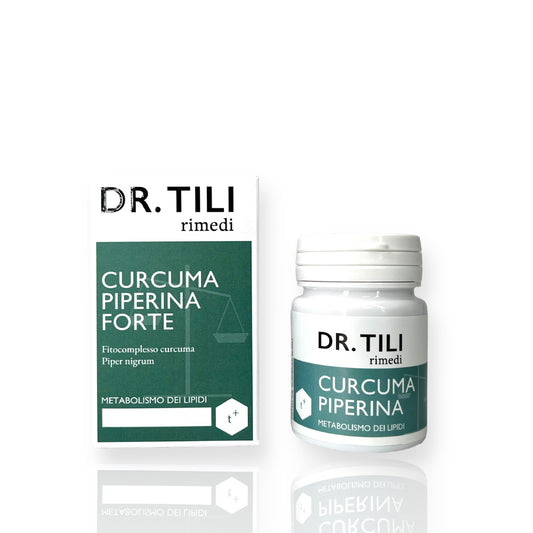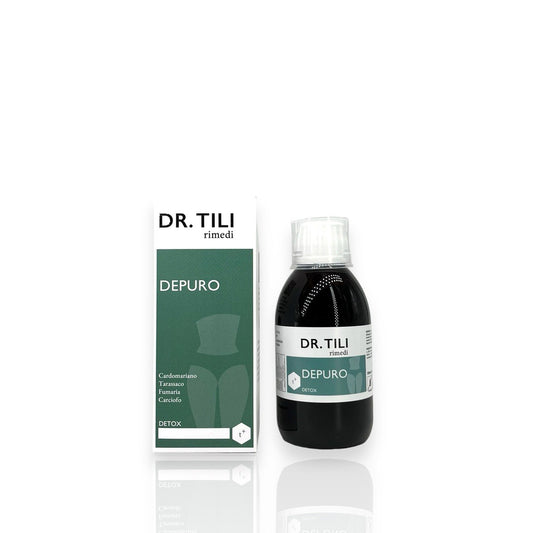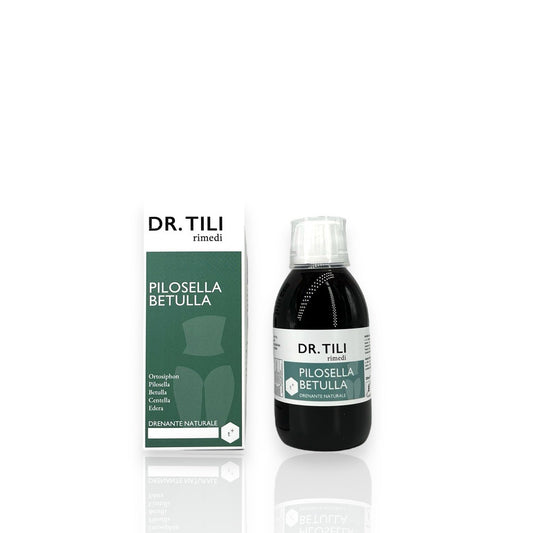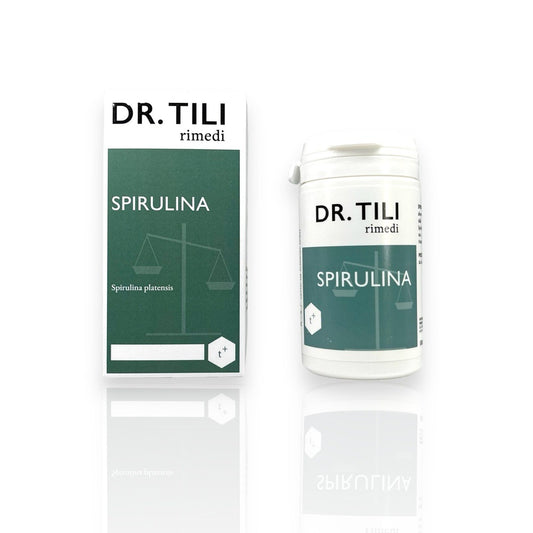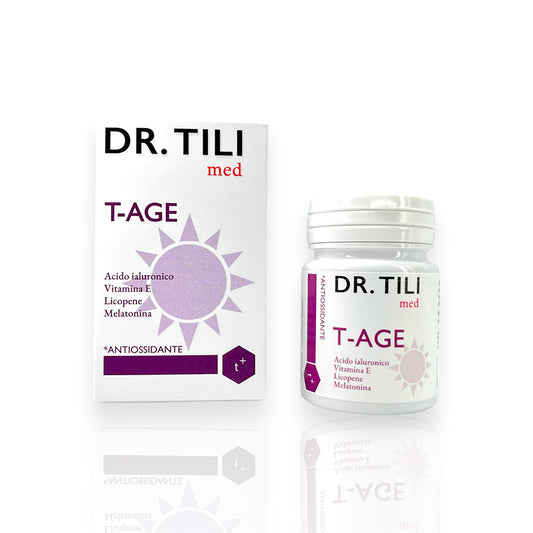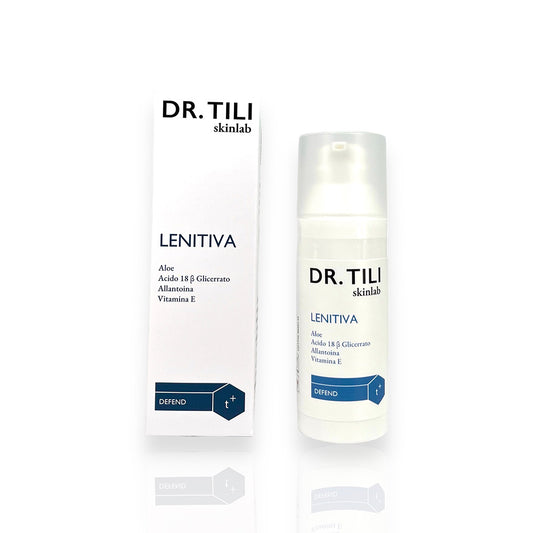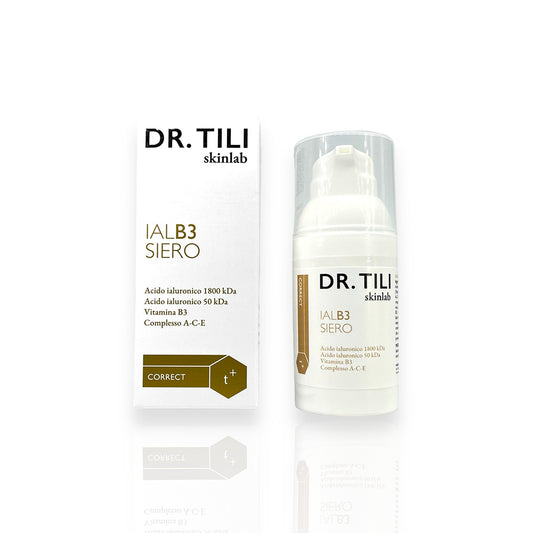ANGELINI PHARMA ITALIA SpA
Momendol 220mg 12 soft capsules
Momendol 220mg 12 soft capsules

Pickup available at Farmacia Tili
Usually ready in 24 hours
PRODUCT NET WEIGHT
PRODUCT NET WEIGHT
EAN
EAN
025829223
MINSAN
MINSAN
025829223
Momendol 220mg 12 softgels is a nonsteroidal anti-inflammatory drug (NSAID) designed for the short-term symptomatic treatment of mild to moderate pain. Each capsule contains naproxen sodium 220 mg , equivalent to 200 mg of naproxen, an active ingredient known for its analgesic and anti-inflammatory properties. This medicine is indicated for the relief of muscle and joint pain , headache , toothache and menstrual pain . In addition, Momendol can be used in the treatment of fever . The softgels are formulated for rapid absorption, ensuring effective and timely relief. Thanks to its composition, Momendol represents a practical solution for those who need rapid intervention against pain.
ACTIVE INGREDIENTS
Active ingredients contained in Momendol 220mg 12 soft capsules - What is the active ingredient of Momendol 220mg 12 soft capsules?
Each soft capsule contains: Active ingredient: Naproxen sodium 220 mg (equivalent to naproxen 200 mg) Excipients with known effect: sorbitol and sodium. For a full list of excipients, see section 6.1
EXCIPIENTS
Composition of Momendol 220mg 12 soft capsules - What does Momendol 220mg 12 soft capsules contain?
Capsule content : Macrogol 600, Lactic acid, Purified water. Capsule coating : Gelatin, Sorbitol/Glycerol special (50:50), Brilliant blue (E133), Lecithin, Medium chain triglycerides.
DIRECTIONS
Therapeutic indications Momendol 220mg 12 soft capsules - Why is Momendol 220mg 12 soft capsules used? What is it used for?
Short-term symptomatic treatment of mild to moderate pain such as muscle and joint pain, headache, toothache and menstrual pain. Momendol can also be used in the treatment of fever.
CONTRAINDICATIONS SIDE EFFECTS
Contraindications Momendol 220mg 12 soft capsules - When should Momendol 220mg 12 soft capsules not be used?
• Hypersensitivity to the active substance or to any of the excipients listed in paragraph 6.1 or to other closely related substances from a chemical point of view, • patients with allergic manifestations, such as asthma, urticaria, rhinitis, nasal polyps, angioedema, and anaphylactic or anaphylactoid reactions induced by acetylsalicylic acid, analgesics, non-steroidal anti-inflammatory drugs (NSAIDs) and/or antirheumatics, due to possible cross-sensitivity, • patients with gastrointestinal or other bleeding, e.g. cerebrovascular, • patients with gastrointestinal bleeding or perforation related to previous treatment with non-steroidal anti-inflammatory drugs, ongoing treatment with potentially gastro-injurious drugs or history of recurrent peptic haemorrhage/ulcer (two or more distinct episodes of proven ulceration or bleeding), • active stomach and duodenal ulcer, • congestive gastropathy, atrophic gastritis, • chronic inflammatory bowel disease (ulcerative colitis, Crohn's disease), • severe hepatic insufficiency, • severe cardiac insufficiency, • severe renal insufficiency (creatinine clearance < 30 ml/min), • during full-dose treatment with diuretics, • in subjects with active bleeding and at risk of bleeding during anticoagulant therapy, • pregnancy and breastfeeding (See section 4.6 ) . • children and adolescents under 16 years of age.
DOSAGE
Quantity and method of taking Momendol 220mg 12 soft capsules - How to take Momendol 220mg 12 soft capsules?
Dosage Adults and adolescents over 16 years 1 soft capsule every 8-12 hours. If necessary, a better effect can be obtained by starting, on the first day, with 2 soft capsules followed by 1 soft capsule after 8-12 hours. Do not exceed 3 soft capsules in 24 hours. Elderly and patients with renal insufficiency Elderly patients and patients with mild or moderate renal insufficiency should not exceed 2 soft capsules in 24 hours. (See section 4.3, and section 4.4). Do not use for more than 7 days for pain and for more than 3 days for fever. Patients should be advised to consult a doctor if pain and fever persist or worsen. Method of administration Momendol should be taken with a glass of water preferably after a meal.
CONSERVATION
Storage Momendol 220mg 12 soft capsules - How do you store Momendol 220mg 12 soft capsules?
Do not store above 25°C. Store in the original container to protect from moisture.
WARNINGS
Warnings Momendol 220mg 12 soft capsules - About Momendol 220mg 12 soft capsules it is important to know that:
Undesirable effects may be minimised by using the lowest effective dose for the shortest duration necessary to control symptoms (see gastrointestinal and cardiovascular risks below). Clinical trial and epidemiological data suggest that use of coxibs and some NSAIDs (particularly at high doses and in long term treatment) may be associated with a small increased risk of arterial thrombotic events (for example myocardial infarction or stroke). Although some data suggest that use of naproxen (1000 mg/day) may be associated with a lower risk, some risk cannot be excluded. There are insufficient data on the effects of naproxen doses of 220 to 660 mg/day to draw firm conclusions on possible thrombotic risks. There is a close correlation between dosage and the occurrence of serious gastrointestinal undesirable effects. Therefore, the lowest effective dosage should always be used. Elderly patients, who generally have some degree of renal, hepatic and cardiac function impairment, are at increased risk of developing adverse effects related to the use of NSAIDs, especially gastrointestinal bleeding and perforation which may be fatal. These patients should start treatment with the lowest available dose. Concomitant use of protective agents (misoprostol or proton pump inhibitors) should be considered for these patients. Prolonged use of NSAIDs in the elderly is not recommended. Before starting treatment with Momendol Caution is required before starting treatment in patients with a history of hypertension and/or non-severe heart failure since fluid retention, hypertension and edema have been reported in association with NSAID treatment. Diuresis and renal function should be well monitored, particularly in the elderly, in patients treated with diuretics, or following major surgery involving hypovolaemia. Particular caution is advised in patients with a history of gastrointestinal disease or non-severe hepatic insufficiency, especially in the elderly. The use of the medicinal product should be avoided in cases of pain of gastrointestinal origin. The concomitant use of protective agents (misoprostol or proton pump inhibitors) should be considered in elderly patients, in patients with non-severe gastrointestinal disease and for patients taking low dose aspirin or other drugs that may increase the risk of gastrointestinal events (see below and section 4.5). Caution is advised when treating habitual consumers of high doses of alcohol, as they are at risk of gastric bleeding. The use of Momendol should be avoided in conjunction with NSAIDs including selective COX-2 inhibitors. During treatment with Momendol If visual disturbances occur, treatment with Momendol should be discontinued. Serious skin reactions, some of them fatal, including exfoliative dermatitis, Stevens-Johnson syndrome, and toxic epidermal necrolysis, have been reported very rarely in association with the use of NSAIDs (see section 4.8). Patients appear to be at highest risk in the early stages of therapy: the onset of the reaction occurs in most cases within the first month of treatment. Momendol should be discontinued at the first appearance of skin rash, mucosal lesions or any other sign of hypersensitivity. Naproxen, like any other NSAID, may mask the symptoms of concomitant infectious diseases. In isolated cases, an exacerbation of infectious-based inflammation (e.g. development of necrotizing fasciitis) has been reported in temporal connection with the use of NSAIDs. Gastrointestinal bleeding, ulceration and perforation, which may be fatal, have been reported with all NSAIDs at any time during treatment, with or without warning symptoms or a previous history of serious gastrointestinal events. Patients with gastric tolerance problems, particularly the elderly, should report any unusual gastrointestinal symptoms (especially gastrointestinal bleeding) particularly in the initial stages of treatment. Caution should be exercised in patients receiving concomitant medications which could increase the risk of ulceration or bleeding, such as oral corticosteroids, anticoagulants such as warfarin, selective serotonin reuptake inhibitors or anti-platelet agents such as aspirin (see section 4.5). If gastrointestinal bleeding or ulceration occurs in patients receiving Momendol, the treatment should be withdrawn. Naproxen inhibits platelet aggregation and may prolong bleeding time. Patients with coagulation disorders or on therapy with medicinal products that interfere with haemostasis should be carefully monitored while taking Momendol. Regarding combinations with other medicinal products requiring caution, see section 4.5 “Interaction with other medicinal products and other forms of interaction” . Momendol soft capsules contain: • Sorbitol: sorbitol is a source of fructose. If your doctor has told you that you (or your child) have an intolerance to some sugars, or if you have been diagnosed with hereditary fructose intolerance, a rare genetic disorder in which patients cannot break down fructose, talk to your doctor before you (or your child) take this medicine.• Sodium: This medicine contains less than 1 mmol sodium (23 mg) per capsule, that is to say essentially 'sodium-free'.
INTERACTIONS
Interactions Momendol 220mg 12 soft capsules - Which medicines or foods can modify the effect of Momendol 220mg 12 soft capsules?
Contraindicated combinations Anticoagulants Naproxen may increase the effect of anticoagulants, such as coumarin-type anticoagulants (e.g. warfarin, dicoumarol) because it prolongs prothrombin time and reduces platelet aggregation, increasing the risk of gastrointestinal bleeding (see sections 4.3 and 4.4). Not recommended combinations Nonsteroidal anti-inflammatory drugs (NSAIDs) or corticosteroids The administration of naproxen with other nonsteroidal anti-inflammatory drugs (NSAIDs) or corticosteroids is not recommended as it increases the risk of ulcers and gastro-duodenal bleeding (see section 4.4). Lithium The combination of naproxen and lithium should be avoided; when necessary, close monitoring of lithium plasma levels and dosage adjustment are recommended. Increased lithium levels may induce nausea, polydipsia, polyuria, tremor and confusion. Antiplatelet agents and selective serotonin reuptake inhibitors (SSRIs) Concomitant use of antiplatelet agents and selective serotonin reuptake inhibitors (SSRIs) increases the risk of gastrointestinal bleeding (see section 4.4). Acetylsalicylic acid Clinical pharmacodynamic data show that concomitant use of naproxen for more than one consecutive day may inhibit the effect of low-dose acetylsalicylic acid on platelet activity and this inhibition may persist for several days after cessation of treatment with naproxen. The clinical relevance of this interaction is unknown. Ciclosporin Inhibitors of prostaglandin synthesis such as naproxen, due to their effect on renal prostaglandins, may cause an increase in the nephrotoxicity of ciclosporin. Tacrolimus Concomitant intake of nonsteroidal anti-inflammatory drugs and tacrolimus may lead to acute renal failure. Methotrexate A serious increase in methotrexate toxicity has also been observed in case of combined therapy with naproxen. The mechanism of this interaction is unclear, which may be due to a reduction in the renal clearance of methotrexate. Combinations to be used with caution Hydantoin and sulphonamide derivatives Due to the high binding of naproxen to plasma proteins, caution is advised in concomitant treatment with hydantoin or sulphonamide derivatives. Sulphonylureas It is important to take into account the possibility of an increase in the binding effects of sulphonylureas (oral antidiabetics) due to inhibition of plasma proteins. Furosemide and loop diuretics Concomitant use with furosemide may lead to a reduction in the natriuretic effect of the diuretic. Beta-blockers The association of Momendol with beta-blockers may reduce their antihypertensive effect. Probenecid Concomitant administration of probenecid increases plasma levels of naproxen and significantly prolongs the plasma half-life. Thiazide diuretics, ACE inhibitors and Angiotensin II antagonists NSAIDs may reduce the effect of thiazide diuretics and other antihypertensive drugs. In some patients with compromised renal function (e.g. dehydrated patients or elderly patients with compromised renal function) the co-administration of an ACE inhibitor or an angiotensin II antagonist and agents that inhibit the cyclo-oxygenase system may lead to further deterioration of renal function, including possible acute renal failure, which is usually reversible. Patients should be adequately hydrated and consideration should be given to monitoring renal function after initiation of concomitant therapy, especially in elderly patients. Digoxin Concomitant administration of Momendol with digoxin may alter the serum levels of the latter. Laboratory Tests Naproxen may affect bleeding time (which may be increased up to 4 days after discontinuation of therapy), creatinine clearance (may decrease), blood urea nitrogen, creatinine and potassium levels (may increase), and liver function tests (transaminase elevations may occur). Naproxen may induce false-positive urinary 17-ketosteroid determinations and may interfere with urinary 5-hydroxyindoleacetic acid determinations. Naproxen therapy should be discontinued at least 72 hours before adrenal function tests.
SIDE EFFECTS
Like all medicines, Momendol 220mg 12 soft capsules can cause side effects - What are the side effects of Momendol 220mg 12 soft capsules?
Like other NSAIDs, naproxen may induce the following undesirable effects. The most commonly observed undesirable effects are gastrointestinal in nature. Clinical trial and epidemiological data suggest that use of coxibs and some NSAIDs (particularly at high doses and in long-term treatment) may be associated with a small increased risk of arterial thrombotic events (for example myocardial infarction or stroke) (see section 4.4). Peptic ulcers, perforation or gastrointestinal bleeding, sometimes fatal, particularly in the elderly, may occur (see section 4.4). Nausea, vomiting, diarrhoea, flatulence, constipation, dyspepsia, abdominal pain, melaena, haematemesis, ulcerative stomatitis, exacerbation of colitis and Crohn's disease have been reported after administration of Momendol (see section 4.4). Less frequently, gastritis has been observed. Bullous reactions including Stevens-Johnson syndrome and toxic epidermal necrolysis (very rare). Oedema, hypertension and cardiac failure have been reported in association with NSAID treatment. As with other NSAIDs, allergic reactions of anaphylactic or anaphylactoid type may occur in patients with or without previous exposure to drugs belonging to this class. The characteristic symptoms of an anaphylactic reaction are: sudden severe hypotension, rapid or slow heartbeat, unusual tiredness or weakness, anxiety, agitation, loss of consciousness, difficulty breathing or swallowing, itching, urticaria with or without angioedema, redness of the skin, nausea, vomiting, crampy abdominal pain, diarrhoea. The following table lists the undesirable effects using the following frequency scales: very common (>1/10); common (>1/100, <1/10); uncommon (>1/1000, <1/100); rare (> 1/10,000, < 1/1,000); very rare (<1/10,000); not known (frequency cannot be estimated from the available data).
| Classification by systems and organs | Frequency category |
| Pathologies of the haemolymphopoietic system | Very rare: aplastic or haemolytic anaemia, eosinophilia, thrombocytopenia, leukopenia, granulocytopenia such as agranulocytosis |
| Immune system disorders | Uncommon: allergic reactions (including facial oedema and angioedema). |
| Psychiatric disorders | Uncommon: sleep disturbance, excitement |
| Very rare: depression, difficulty concentrating | |
| Metabolism and nutrition disorders | Rare: hyperglycaemia, hypoglycaemia |
| Nervous system disorders | Common: headache, drowsiness, dizziness, lightheadedness |
| Uncommon : drowsiness, insomnia | |
| Very rare: meningitis-like reaction, aseptic meningitis in patients with autoimmune diseases, cognitive disorders, convulsions | |
| Eye pathologies | Uncommon: vision disturbances |
| Very rare: corneal opacity, papillitis, retrobulbar optic neuritis, papilledema | |
| Ear and labyrinth pathologies | Uncommon: tinnitus, hearing impairment |
| Very rare: hearing loss | |
| Heart disease | Very rare: Tachycardia, edema, hypertension and cardiac failure have been observed in association with treatment with NSAIDs. |
| Vascular pathologies | Uncommon: ecchymosis |
| Very rare: vasculitis | |
| Respiratory, thoracic and mediastinal pathologies | Very rare: dyspnoea, asthma, eosinophilic pneumonia, alveolitis |
| Gastrointestinal disorders | Common: nausea, dyspepsia, vomiting, heartburn, gastralgia, flatulence |
| Uncommon: diarrhoea, constipation | |
| Rare: peptic ulcer, perforation or gastrointestinal bleeding, sometimes fatal; haematemesis, ulcerative stomatitis, worsening of colitis and Crohn's disease may occur, especially in the elderly (see section 4.4). | |
| Very rare: colitis, stomatitis, pancreatitis, aphthous ulcers, esophagitis. Less frequently, it has been observed | |
| Not known: gastritis | |
| Hepatobiliary pathologies | Very rare: jaundice, hepatitis (including fatal cases), decreased liver function |
| Skin and subcutaneous tissue disorders | Uncommon: skin rash/pruritus |
| Very rare: photosensitivity including porphyria cutanea tarda (“pseudoporphyria”) or epidermolysis bullosa, alopecia, vesicular eczema including Stevens-Johnson syndrome and toxic epidermal necrolysis, erythema multiforme, erythema nodosa, fixed erythema, lichen planus, pustules, systemic lupus erythematosus, purpura, sweating | |
| Musculoskeletal and connective tissue disorders | Rare: myalgia, muscle weakness |
| Kidney and urinary disorders | Uncommon: decreased renal function |
| Rare: glomerulonephritis | |
| Very rare: interstitial nephritis, papillary necrosis, nephrotic syndrome, nephritic syndrome, renal failure, nephropathy, haematuria, proteinuria | |
| Systemic disorders and conditions related to the administration site | Uncommon: chills, oedema (including peripheral oedema) |
| Rare: pyrexia | |
| Very rare: thirst, malaise | |
| Diagnostic tests | Very rare: increased blood pressure, increased serum creatinine, abnormal liver function tests, hyperkalaemia |
Reporting of suspected adverse reactions Reporting suspected adverse reactions that occur after authorisation of the medicinal product is important. It allows continued monitoring of the benefit/risk balance of the medicinal product. Healthcare professionals are asked to report any suspected adverse reactions via the national reporting system at https://www.aifa.gov.it/content/segnalazioni-reazioni-avverse.
OVERDOSE
Momendol 220mg 12 softgels Overdose - What are the risks of Momendol 220mg 12 softgels in case of overdose?
Signs of overdose may include drowsiness, heartburn, diarrhea, nausea, vomiting, abdominal pain, dizziness, disorientation, gastric bleeding, drowsiness, increased blood sodium levels, metabolic acidosis, convulsions, changes in liver function, hypoprothrombinemia, renal dysfunction, apnea. In case of accidental or voluntary ingestion/administration of a large amount of the product, the physician must implement the normal measures required in these cases. Emptying the stomach and the usual supportive measures are recommended. Prompt administration of an adequate amount of activated charcoal may reduce the absorption of the medicine.
PREGNANCY AND BREASTFEEDING
If you are pregnant or breast-feeding, think you may be pregnant or are planning to have a baby, ask your doctor for advice before taking Momendol 220mg 12 soft capsules.
Pregnancy Inhibition of prostaglandin synthesis may adversely affect the pregnancy and/or the embryo/fetal development. Results of epidemiological studies suggest an increased risk of miscarriage and of cardiac malformation and gastroschisis after use of a prostaglandin synthesis inhibitor in early pregnancy. The absolute risk of cardiac malformations increased from less than 1%, up to approximately 1.5%. The risk was believed to increase with dose and duration of therapy. In animals, administration of prostaglandin synthesis inhibitors has been shown to result in increased pre- and post-implantation loss and embryo-fetal mortality. In addition, an increased incidence of various malformations, including cardiovascular, has been reported in animals given prostaglandin synthesis inhibitors during the organogenetic period. During the third trimester of pregnancy, all prostaglandin synthesis inhibitors may expose the fetus to: • cardiopulmonary toxicity (with premature closure of the ductus arteriosus and pulmonary hypertension); • renal dysfunction, which may progress to renal failure with oligo-hydroamniosis; the mother and the neonate, at the end of pregnancy, to: • possible prolongation of bleeding time, and anti-aggregating effect which may occur even at very low doses; • inhibition of uterine contractions resulting in delayed or prolonged labor. Consequently, Momendol is contraindicated during pregnancy (see section 4.3). Breast-feeding Since NSAIDs are excreted in breast milk, the medicinal product is contraindicated during breast-feeding (see section 4.3). Fertility There is some evidence that drugs which inhibit the synthesis of prostaglandins and cyclooxygenase may cause problems for female fertility by an effect on ovulation. This is reversible if treatment is stopped. The use of Momendol, as with any drug that inhibits the synthesis of prostaglandins and cyclooxygenase, is not recommended in women who intend to become pregnant. The administration of Momendol should be suspended in women who have fertility problems or who are undergoing investigations of fertility.
DRIVING AND USE OF MACHINERY
Taking Momendol 220mg 12 softgels before driving or using machines - Does Momendol 220mg 12 softgels affect driving or using machines?
Due to the possible occurrence of drowsiness, dizziness, vertigo or insomnia Momendol may compromise the ability to drive and use machinery. In this case, avoid these activities or others that require particular vigilance.



